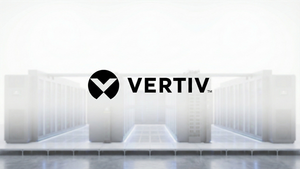Achievers survey of 3,600 employees and 1,390 HR leaders shows that 63% of HR leaders are increasing recognition spending, yet ‘shadow contributors’ are on the rise
The number of "shadow contributors," or employees that are never recognized, has doubled in the last two years, according to the 2024 State of Recognition report from Achievers Workforce Institute (AWI). AWI is the research and insights arm of Achievers, a global leader in employee experience solutions, with a focus on recognition, employee voice, and connection.
The State of Recognition is an annual survey AWI conducts to examine trends, best practices, and priorities in employee recognition programs. This year, AWI surveyed 3,600 employees and 1,390 HR leaders.
The study indicates that one main driver for shadow contributors is cultural. One-quarter of respondents say people at their company simply do not recognize each other. Many organizations are highly focused on retaining top performers, focusing resources and recognition on the 20% or so who consistently outperform. However, there is considerable opportunity in increasing recognition across the board, likely improving outcomes for both average and low performers.
In contrast to the year-over-year increase in shadow contributors, 63% of HR leaders surveyed are planning to increase their recognition program budgets, despite a majority (60%) saying they don't see business results from their program. This disconnect indicates that many HR leaders are treating recognition in a silo, rather than aligning it with company objectives. If companies have a recognition program just to check the box and aren’t connecting to business results, then no wonder many non-HR leaders see the function as a cost center, not a business driver.
"While it's great to see recognition platforms grow in popularity, it's truly troubling that shadow contributors have doubled," said Caitlin Nobes, head of Workforce Research and Content at AWI. "Recognition is not just about celebrating a few star players. It's even more critical that unseen talent receives kudos for their work. What gets recognized gets repeated, and organizations must start treating their recognition programs for what they are – powerful positive reinforcement strategies. These tools nudge key behaviors to ensure even the most under-recognized workforces can shift their mindset and embrace praise at every level. Nudging the right behaviors for each organization is the difference between a nice-to-have program and truly strategic recognition.”
Adopt a science-backed recognition formula
AWI finds that the most successful recognition programs share several key traits. Data consistently validates monthly recognition as the top results driver, and organizations that meet this threshold for every employee double their productivity and employee engagement and more than double employee rates of high belonging.
Forward-thinking companies make monthly recognition a reality by leveraging a mix of low-monetary and social recognition. This approach nudges positive behaviors without having to secure budget approvals for pricier recognition tactics. Effective recognition programs are also 45% more likely to integrate recognition with other tools, such as corporate chat apps and email, making it easy for employees to share praise where they already spend their time.
Additionally, leading recognition strategies upskill managers to share monthly recognition with their direct reports, which helps triple managerial trust. While managers establish a foundation for recognition, top programs also include peer recognition to foster employee connections and accelerate results.
Consider industry and demographic-specific gaps
When building or strengthening recognition programs, HR leaders should consider whether they’re operating in an industry where under-recognition is rampant, such as healthcare. This data shows that healthcare workers are 41% more likely than average to be shadow contributors. These workers also face high burnout rates due to long hours and widespread labor shortages, emphasizing that healthcare employers must use recognition to counteract disengagement.
Businesses must also find and bridge recognition inequities in historically marginalized groups within their workforce. While this is a daunting task, companies can streamline it by breaking down the silos between benefits-focused HR personas (who typically lead recognition) and their diversity, equity, inclusion, and belonging (DEIB) counterparts. AWI research from 2021 shows that HR leaders who align recognition and DEIB are three times more likely to reach DEIB goals. Yet, just 42% of companies have integrated these core functions, which is why they may overlook blaring gaps, such as women consistently receiving less recognition than men.
Embrace ‘Praise Profiles’ year-round
Innovative integrations between human capital management (HCM) platforms and recognition tools have catalyzed the dawn of the 'praise profile,' a real-time employee performance snapshot that aggregates every recognition an employee has received from their managers and peers over time. Therefore, businesses gain more visibility into who is engaged and happy, which in turn enables the business to drive manager effectiveness and empower faster decisions.
For instance, an employer can leverage a Praise Profile to identify an under-recognized team and upskill its manager on employee appreciation best practices. With automated Praise Profiles, people leaders are also freed from writing extensive performance evaluations, which often do not accurately reflect other managers' insights on an employee's work over time.
“The Praise Profile is an opportunity to take feedback to a new level with holistic visibility on employee skills and successes, reducing recency bias and bringing side projects into the light,” said Kumari Williams, Vice President, VIBE (Value, Inclusion, Belonging & Equity) at Workday. “From solving manager blind spots to helping business leaders identify who is missing out on deserved recognition to contributing to a flight risk metric, I see a lot of opportunity for using an employee’s praise profile to better support and develop them.”
Invest intentionally
"HR leaders are grappling with a recognition knowledge gap that we must close," said Hannah Yardley, Chief People and Culture Officer at Achievers. "It's fantastic to learn that many companies are increasing their recognition spending, but big budgets don't necessarily inspire big miracles; great strategies do. HR pros: if your recognition budget is robust but you're not seeing business benefits, reset your program. To do so, identify your business objectives, align recognition with them, and then measure the impact. And be sure to reduce friction where you can — opt for low-monetary and social recognition and integrate your platform with tools you and your employees use daily."
About the Study
This report is based on surveys conducted in February 2024, completed by 3,600 employees and 1,390 HR leaders. Additional statistics about years of service awards come from surveys of 3,800 employees and 1,450 HR leaders conducted in November 2023. For more information about the 2024 State of Recognition and additional data trends in Australia, Canada, UK, and USA click here.
About Achievers
Achievers partners with hundreds of organizations around the world to elevate their engagement and retention strategies through our employee recognition, voice, and connection solutions.
Visit us at www.achievers.com.
View source version on businesswire.com: https://www.businesswire.com/news/home/20240529117341/en/
Contacts
Media
Maranda Wilson
Maranda.Wilson@achievers.com
Audrey Surette
achievers@pancomm.com






